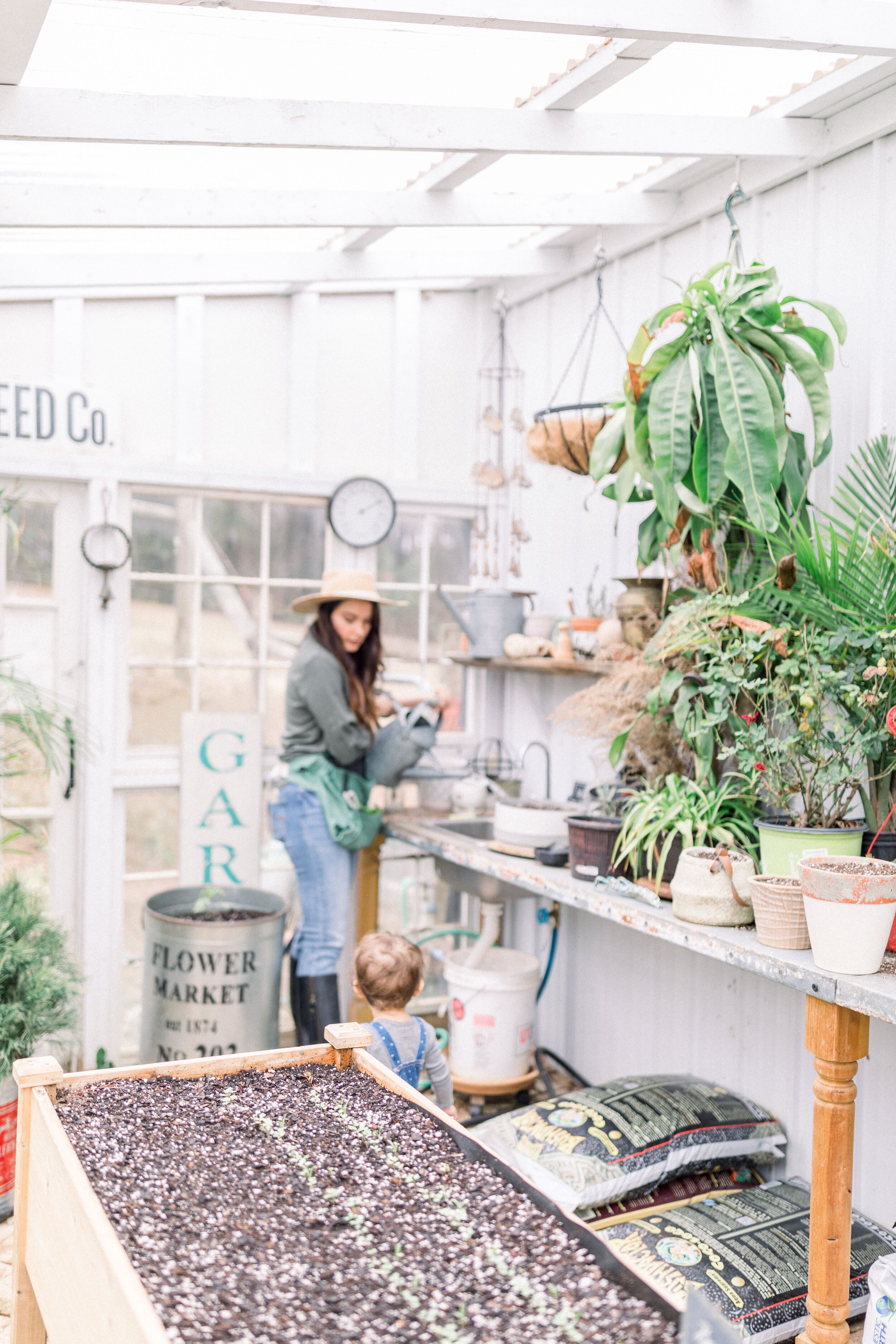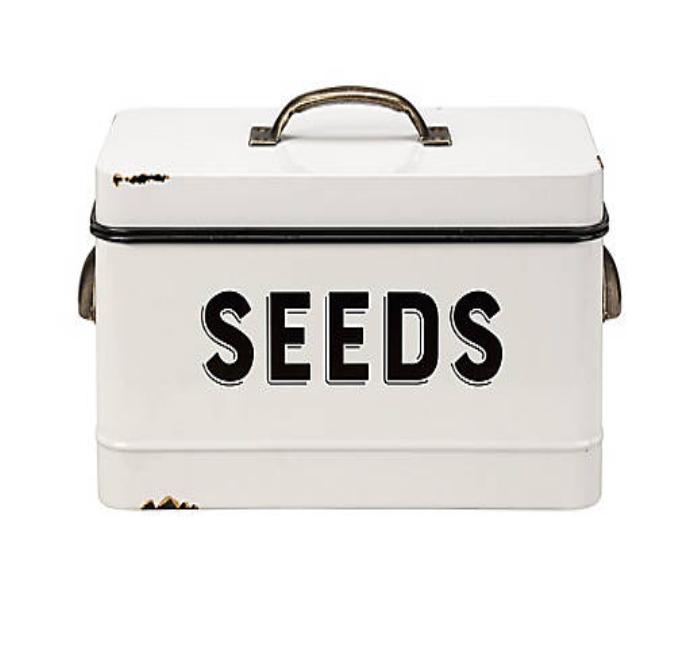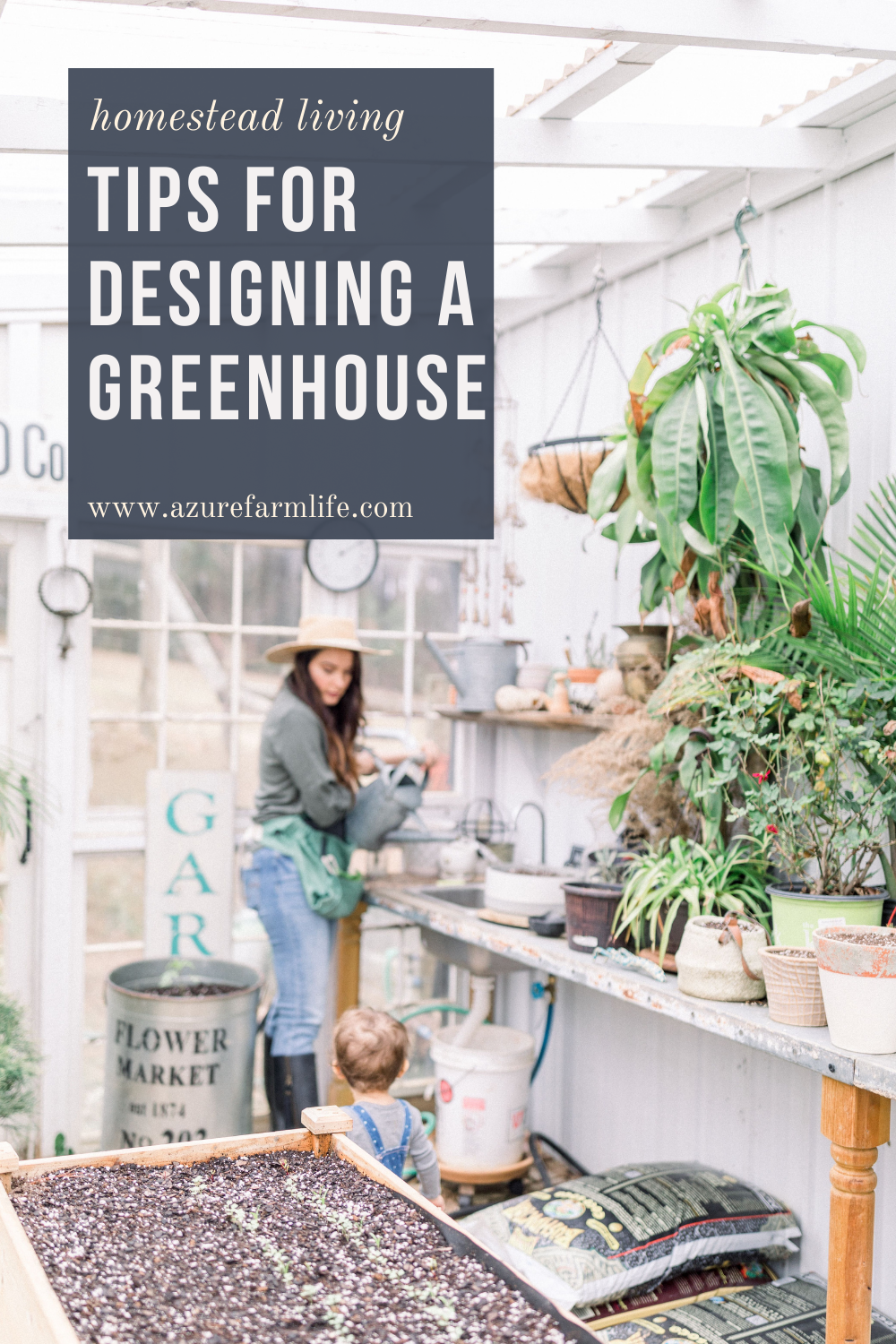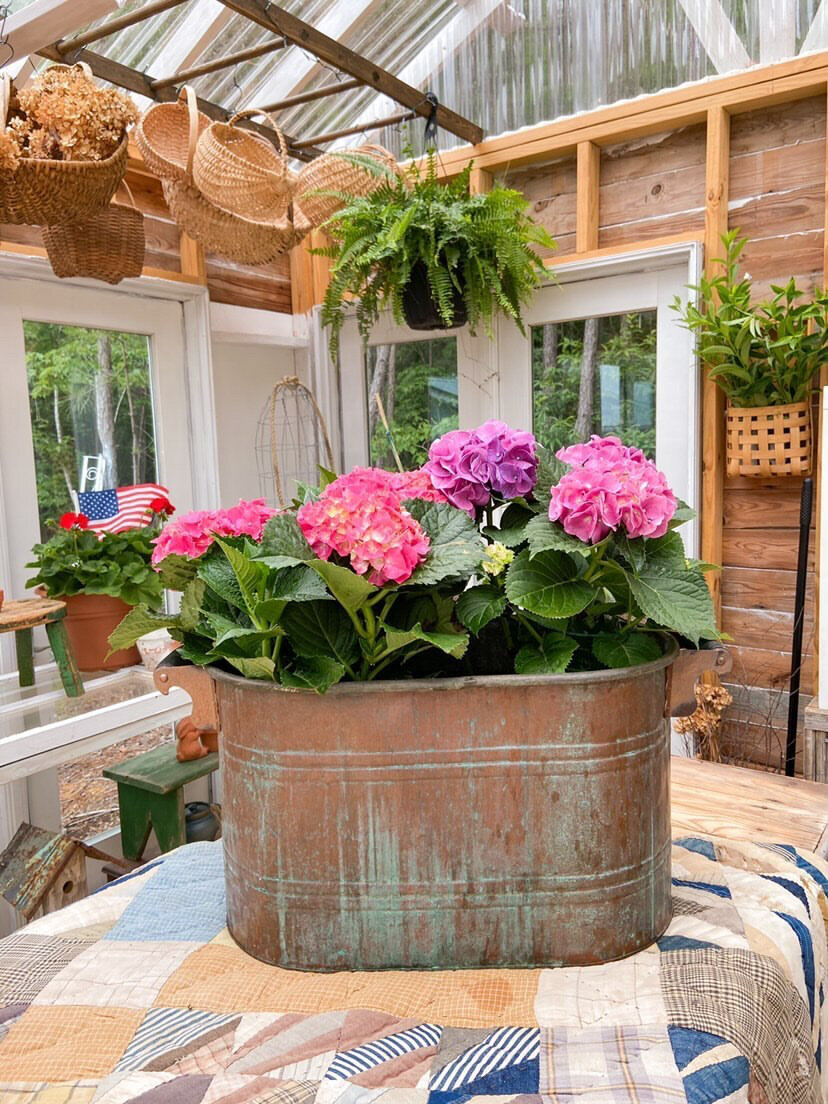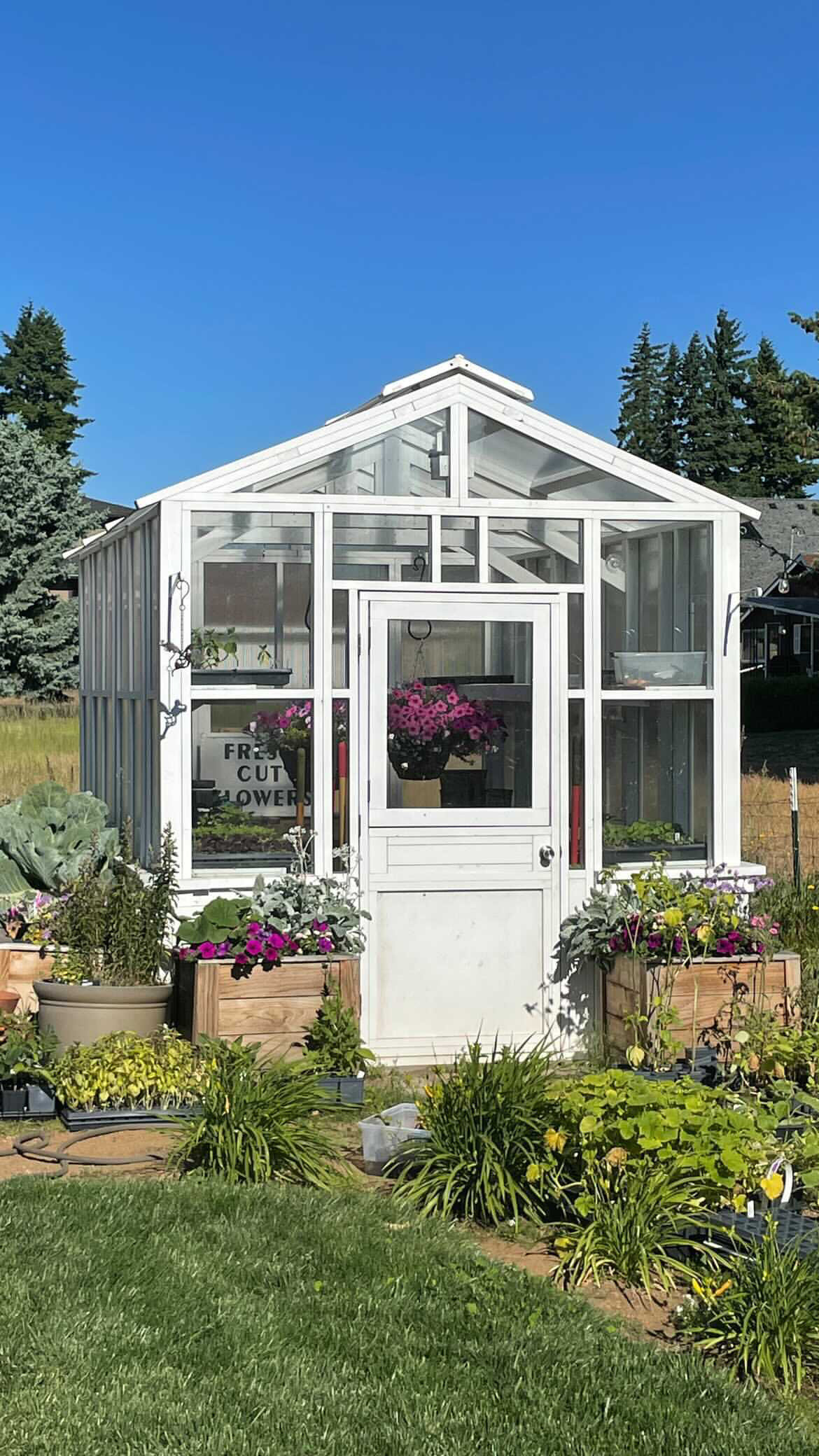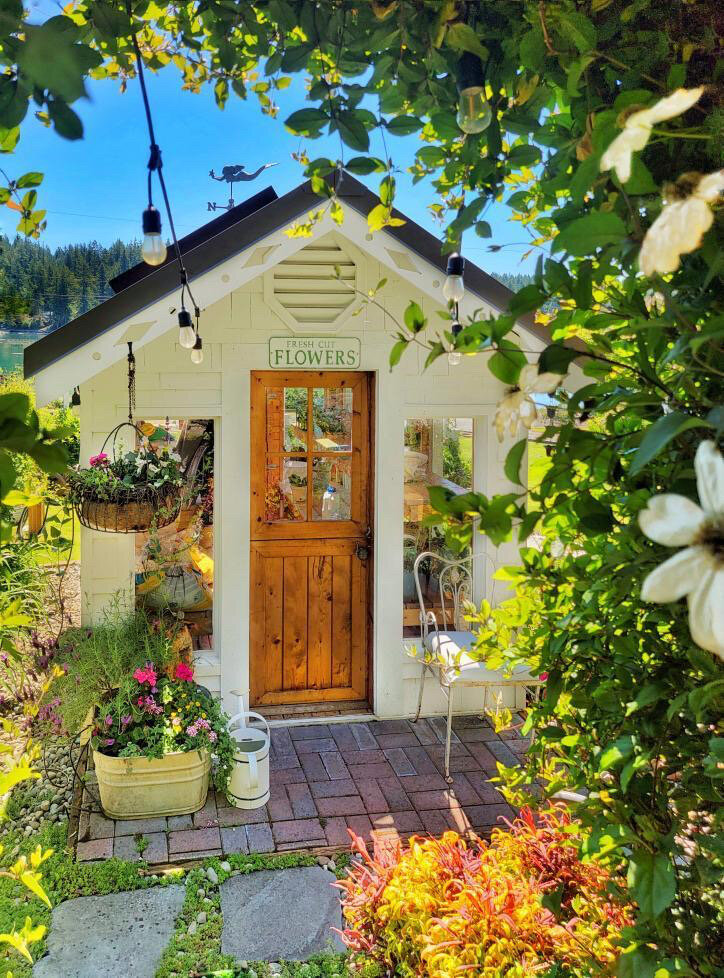How to design the perfect greenhouse for blissful indoor gardening
Hi friends! Let’s talk about greenhouses! Our greenhouse is one of my favorite spots on our homestead and where I hang out a lot. I am a crazy plant lady indeed. Ok, well, perhaps a crazy plant AND cat lady.
It was a dream of mine to have the perfect greenhouse and I am sure it is every gardener's dream. A place where you can watch your beloved plants thrive all year round, where you can spend your days doing what you love without being affected by the weather outside.
If you’re following along for the greenhouse tour from Rachel, Jen, or Kim’s blog, I’m so happy to have you here!
Having the perfect greenhouse with ideal conditions allows me to plant veggies, plants, and flowers almost right through the year. It's protected against extreme temperatures, elements, and seasons. Not to mention all the pests and diseases that loom outside! Keep reading to learn what we did!
Kristin Faye Photography
Kristin Faye Photography
Jessica Elle Photography
Its success does lie, however, in a few key factors and principles.
Designing a greenhouse and doing proper planning beforehand will save you tons of time, frustration, and money. Believe me, I have made all the mistakes and learned from them!
How to Design a Greenhouse; Here are My Top Tips
Determine the Usage and the Perfect Spot
A greenhouse provides the perfect environment for starting seedlings and growing most plants. But, determining what you would predominantly use it for will make the planning and designing more straightforward.
For example, do you want to use it all year round or only perhaps as coverage during the winter months?
Would you like to have it attached to your home or another building, or have it stand-alone?
What types of plants are you planning to grow? Growing plants with the exact ideal requirements are preferred and easier to manage.
Answering all these questions will guide you in the way forward.
The magic of a greenhouse is the ability to let sunshine through but guard the plants against outside risk factors. So as you might have guessed, it needs to be positioned where it will get tons of sunlight—preferably a minimum of 6 hours per day.
So find a spot where the greenhouse faces South or Southwest to get mostly morning sunrays and won't get too much shade from trees or other buildings. And keep in mind how to winter and summer sun would change the situation.
We decided to place our greenhouse on the side of our existing barn! For this we had to cut into the side of a hill and get creative but it has worked out well!
Choosing the Best Building Materials
When you have determined the usage for your greenhouse and how "permanent" it would be, you can search for the best materials for your structure.
Glazing Options
There is nothing more admirable than a greenhouse made entirely of glass and windows. It's such a pretty sight and the kind that most of us dream of!
But, unfortunately, glass is often the most expensive option, not very good at retaining heat, and is not shatter-proof. If you’ve got kids running around and playing with balls it might be a problem. Those windows can get expensive to replace! I actually found ours on craigslist for only $10/window so it ended up being pretty inexpensive on that front. We however had to seal them well and that because a bit harder to do! Search around at scrapyards, old buildings, and flea markets for pre-loved window panes. It will cut some costs
Other options you can look at are polycarbonate and polyethylene, which provide better insulation and heat retention than glass. In addition, they are cheaper, shatter-proof, and can last for ten years or more.
Acrylic and fiberglass are also options that are light, strong, and cheaper than glass but keep in mind that these need to be maintained with a UV coating or replaced every few years.
If you love the glass look, though, go for it! We sure did, because sometimes you need beauty and functionality! Right??
If you are buying new glass panels, it’s best to opt for double-pane glass. And remember, when you choose glass or windows, your frame needs to be made of wood or steel as glass is heavier.
Frame and structure
You must have a strong structure and frame to withstand the weather elements.
Wood is a beautiful material for a classic look, but not always the best option since the conditions in a greenhouse are very moist. If you want to use wood, choose varieties that are resistant to moisture and rot or that have been chemically treated for outdoor use. Maintain it yearly with the correct sealant.
Aluminum is low maintenance, lightweight, economical, and long-lasting but not always the strongest. So it could be a good option when you choose polyethylene plastic and have a small structure. It also needs a good base.
Galvanized steel is durable, strong, and generally cheaper than aluminum and wood. But, it is heavy to handle, not bendable, and can rust over time if not treated.
PVC pipes also work well for hobby greenhouses as they are light, cost-effective, and easy to assemble. It’s however not as durable and strong.
Flooring
Gravel, wood decking, concrete, and bricks are all options to consider.
Concrete is durable, very easy to clean, and good for keeping weeds and pests out. But, it doesn't drain very well so you would need to wipe away excess water.
Gravel drains water well, and you can easily top it up as needed but might not keep bugs and weeds entirely out. You could lay a plastic cover under the gravel to provide an extra layer of cover.
Wood decking would need to be waterproofed and treated often but retains heat well which is great for winter and adds to the charm!
Lastly, bricks are porous, so they drain better, are durable, and keep pests out. They are cheaper than concrete but might be more challenging to clean. We chose brick flooring as it was the best fit for us. I also always had this dream of a beautiful brick floor somewhere on our property! We did not do it in our home so the greenhouse it was!
Kristin Faye Photography
Jessica Elle Photography
Temperatures, Humidity, and Ventilation
Temperature control is essential in greenhouses. And the higher the temperature, the higher the humidity.
The ideal temperature for most plants is around 80 degrees Fahrenheit, but you should be ok if you average between 75-90 degrees Fahrenheit. Install thermometers around your greenhouse at different levels to observe the temps all over.
Your temperature gets controlled by sunshine/heat and ventilation. For the colder months, consider installing an electric/ wood/ oil-based heater. Extractor fans can also be used to pull out the cold air and exhaust warm air.
For the summer months, open up windows for a breeze and have rooftop vents and fans installed for circulation and to get rid of hot air.
Proper ventilation and circulation will ensure that all your plants are exposed to the correct temperatures and prohibit mold and fungus issues.
We use an electric heater winter and open everything up in summer!
Prevention of Diseases
Having good circulation, temperatures and ventilation is already a step in the right direction in preventing plant diseases. But there are measures you must take to keep your plants as healthy as possible and preventing cross-contamination. These include:
Sanitizing your garden tools regularly, mainly when you have used them with sick plants.
Regular cleaning and sanitizing of your shelves, stands, and pots.
Cleaning your benches, walls, and floors at least a few times during the year.
Soapy water and an organic disinfectant will do the job. Alcohol is also an option to wipe your surfaces with.
Ensure plants have adequate space around them for proper circulation of airflow.
Water your plants carefully, avoid wetting the leaves and overwatering.
Keep your floors and shelves as dry as possible, and avoid water stagnation.
Monitor plants daily for any new diseases or insects that need immediate attention or need to be removed from the greenhouse.
Remove weeds inside and outside of the greenhouse regularly.
Kristin Faye Photography
A greenhouse allows you the opportunity to create the perfect environment you need to grow veggies and plants all year long and start seedlings off early in the season.
For me, it was totally worth the initial investment, and we are enjoying the fruits of our labor put into our greenhouse! It’s a wonderful place to enjoy the beauty of gardening year round.
Designing a greenhouse for indoor gardening should be fun and it should fit your needs and capabilities.
There are many DIY kits that you can buy to easily erect a greenhouse. Or, if you are feeling up to the task, watch some tutorials or ask your local builders to help you design and build your dream greenhouse!
A few extra pointers:
Use black pots for your plants, to retain heat better.
Have slatted tables so the water can drain through to the floor.
Garden Boxes, like the one pictured above, allows for easy planting and transferring, without making a mess.
Ensure you have access to electricity for your heaters and fans.
Have a steady supply of water and a water connection nearby.
Use organic fertilizers that will give your indoor plants an extra boost. See how me and Jared fertilize our garden and pots HERE.
With Love,
Annette xx
SHOP THIS POST
Pin For Later
Thank you for joining along! Take a look at my friends beautiful greenhouses for more inspiration! They are sharing how to style the greenhouse and just inspire you! I love it so much!







